The Timber Creek Distillery is located on a family farm just north of Destin, Florida. Our vision is to take the best local fruits and grains from the Florida Panhandle and turn them into the finest Craft Spirits. We take great pride in hand making every batch and hand bottling every bottle.
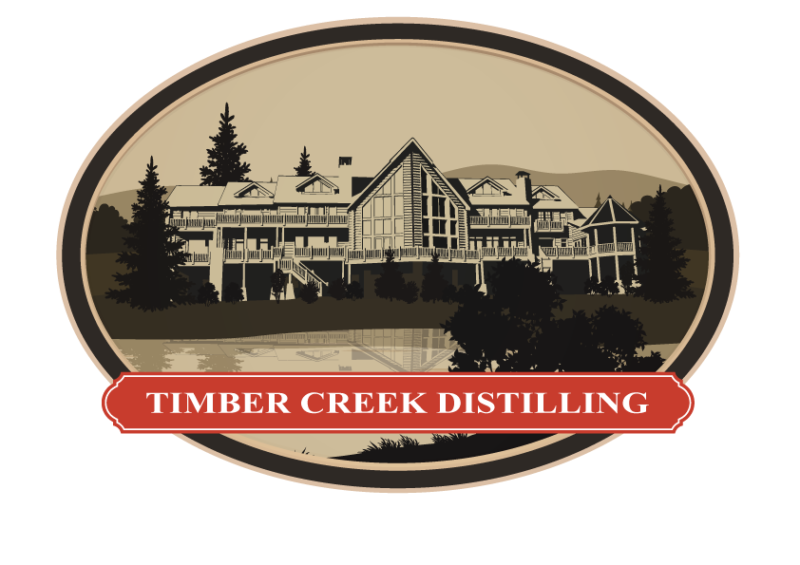 Cam, tell us a bit about your background.
Cam, tell us a bit about your background.
CF: My background is in engineering and entrepreneurship. BSEE at U of MD, MSEE at FSU, and MBA at UF. I spent the last 20 years out in Silicon Valley working in Tech with companies such as Intel, HP, and Seagate as well as numerous start-ups. My last start-up was sold to Oracle. I specialized in Product development, product management, product marketing, strategic planning, and business development. I helped start up several tech businesses inside of Seagate, Intel, and as stand alone companies.
Wow Cam, that’s quite a background! Please tell me how the Timber Creek Distillery came about?
CF: Life in silicon valley was getting really crazy as the kids got older, so my wife and I had planned to move down to Destin to slow down a bit. In Cali, we both had to work to pay the mortgage, etc. My first job was up in Panama City and my wife grew up in Fort Walton Beach, so we had purchased a vacation home here and love it down here, so when things got too crazy, we just sold our house and moved down to our home here in Destin. While I could work in Tech from just about anywhere, it would require a lot of travel and I didn’t want to do that forever, so I told my wife that I wanted to start some local business down here so eventually I wouldn’t have to travel so much.
I researched many ideas and a neighbor of mine in Cupertino new I was moving and looking for business ideas, so he had sent me an article on Craft Distilling he read in Popular Mechanics. He was also a tech start-up guy and he and I often talked about various business ideas. I spent a couple of years doing research in several business ideas and eventually honed in on Craft distilling. One critical factor for the success of many businesses is market timing, and I thought the market was ripe for craft distilling here in North Florida and in the region, so I developed my business plan and decided to go for it.
Before I invested a bunch of money in the endeavor, I wanted to make sure I could actually make good spirits, so I built a small backyard still and started playing around. As I was doing this, I began discussing the business with my next door neighbor. It turns out that he was an avid home brewer and had done it for many years, so he actually knew a lot more about grains, yeast, and fermenting than I did. I would bring him samples of my product to taste every couple of days….and when I made it past the basic sugar wash and started cooking grains to make whiskey, he started helping. He gave me some of his beer equipment and helped with some of the mashing. He got interested in this idea and started learning about distilling as well. We had many long conversations about the industry, the products, the plant design, etc. he even built a fully automated RIMS system to cook grains for our first still.
After playing around for about 6 months, we got a knock on the door. My 9 year old son was home alone….and it turned out to be the Florida ABT. They knew I had bought a still off the internet and were chasing me down. After their visit, my neighbor and I decided it was time to go into business. We asked his parents if we could use the barn at their farm as our distillery and they said yes……so we filed our state and federal applications and Timber Creek Distillery was born. The property that my partners parents own is beautiful and makes an awesome distillery. They have a 26,000 sq. ft. log hunting lodge on 1600 acres about 50 minutes north of Destin. We were given access to a 5,000 sq. ft metal building to build our distillery. The lodge had been named Timber Creek Lodge by the builder and first owner…..so we stuck with the name and became Timber Creek Distillery. You can see the lodge itself at www.thetimbercreeklodge.com
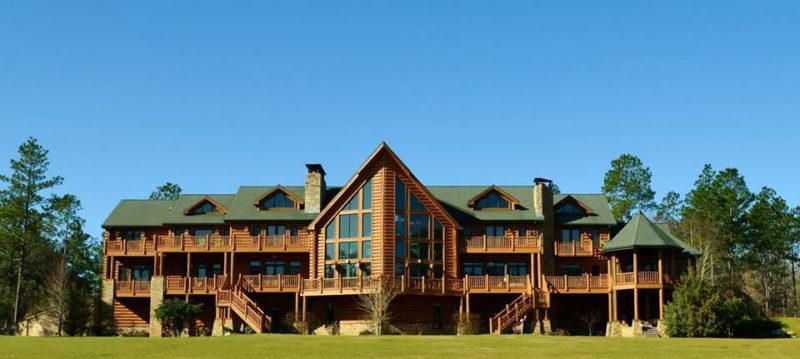 What have been the main challenges involved in setting up a new distillery?
What have been the main challenges involved in setting up a new distillery?
CF: As an engineer and with my partner’s brewery experience, designing the distillery operation was not very difficult. We worked with some brewery suppliers to basically build out a beer brewery and then we cut the top off of a Brew Kettle and put a still head on top of it to make our still. One of the biggest design decisions was the size of the facility. We did a lot of research on the craft brewing industry and it was clear that in order to break even in that business you really needed to have at least a 7-10 barrel system, so we figured the economics were similar in the spirits industry and decided to build at least a 15 barrel system. The big challenge is that when you go that big, you really need to use steam heating and we knew nothing about steam, so I had to learn it quick. Once we got our arms around the steam system, the cost for us to bump up the size from 15 barrel to 20 barrel was only a few thousand dollars, so we went big right out of the gate.
Our assumptions that beer brewing processes and distilling processes are similar turned out to be correct and our distillery pretty much operates as we had designed it to. Our goal long term is to make whiskey, but in order to pay the bills, we also decided to make Rum….especially since we live at the Beach in Destin. So we designed our plant to handle both. We designed the plant to handle both and it works very well.
The last big challenge we faced was signing a distributor. As you know, the Feds mandate 3 tier distribution everywhere and here in Florida there are also local Tied House Evil laws that prevent cross over between tiers. I would bet that the way the laws are written are actually unconstitutional and illegal because they require manufacturers to only sell through distribution channels, but there is no reciprocal that requires distributors to carry our products. So, the state of Florida can license me to be a spirits manufacturer, but their strict laws could prevent me from having a path to market.
Here in Florida, there are actually exceptions that have been granted for Wineries and breweries. Wineries are allowed to also be their own distributors. Breweries have the ability to sell full beers and growlers directly from the brewery, but when we started, distilleries had no such exceptions….so if there were no distributors willing to carry our product, I would have no path to market. Since we have started, the laws have begun to loosen a bit. We can now sell 2 bottles per person, per brand, per year directly from the distillery…..but that alone is not a sustainable market. We were fortunate enough to sign on with a distributor and have been selling our products in Florida for the past year. Our volumes are steadily growing and we are beginning to look for distribution in neighboring states.
Cam, what led you to start your own business?
CF: As an entrepreneur, I have always wanted to start and run my own business. As I got older, the dream is to not have to work for anyone else and to do what I love to do, so starting the distillery was and is a lot of fun and the only boss I report to is my wife and she is very supportive of our business. I am still working my “day” job in tech, but hopefully we will grow fast enough this year that I can quit my job and focus completely on the distillery. My partner is a real estate broker, so his job also allows him to work on the distillery as well as dabble in real estate. With his brewing background, he is our head distillery and runs the plant and I handle the business side. This is a fun industry and we both really enjoy getting out and promoting our products and engaging with the community.
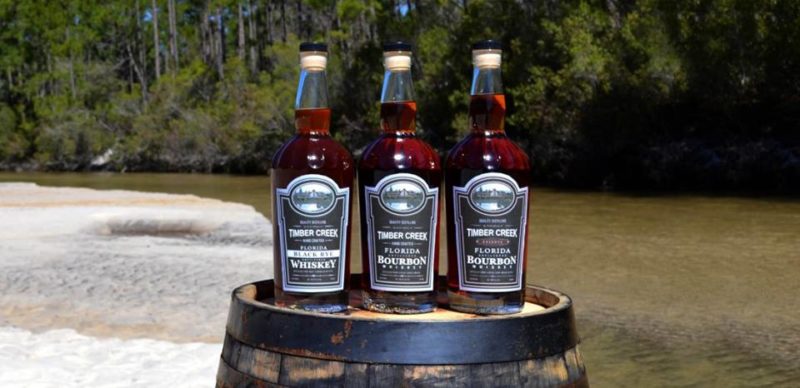 What whiskey expressions do you currently produce, and how are they all different?
What whiskey expressions do you currently produce, and how are they all different?
CF: We currently make 3 different whiskeys, with a 4th on the way. Our first products including 2 Bourbons and a Rye whiskey. Our Florida Bourbon is a wheated Bourbon similar in mash bill to Makers Mark or Buffalo Trace. Our Reserve Florida Bourbon is a 4 grain Bourbon and very heavy on the Rye so it has a lot of complexity and flavor, and we have a Florida Black Rye which is made from Florida 401 Black Rye grains that are only grown here in Florida. All of our corn, wheat, and rye
So, there are a couple of things that make our whiskeys different. First, we believe that the scotch distillers know what they are doing, so we tried to design our plant in a similar manner. Basically this means that we use a roller mill instead of a hammer mill and we crack the grains instead of pulverize them into a flour. Second we use a traditional beer lauter tun to lauter the grains to separate the husks from the beer. We do this to remove the husks from the equation as soon as possible. For corn, this is not a big deal, but for wheat, rye, and barley, they all have woody husks that can contribute tannins into the spirit. We really want the grain flavors to shine through with as few tannins as possible, so we lauter all of our grains….including the corn just to keep the process consistent. We believe that cracking the grains and lautering them vs. pulverizing to a flour and fermenting and distilling on the grains gives us a much cleaner, pure spirit. Third we control the fermentation temperature in closed fermenters. Fermentation temperature is extremely important in controlling the flavor of beer and we believe that by maintaining optimal fermentation temperature allows us to control the flavors imparted by the yeast in a consistent way.
As you may know, when yeast ferments at too high a temperature, they become stressed and can impart off flavors. Given that we live in Florida where it is quite hot, we believe it is very important to control the fermentation temperature and maintain a very healthy and vibrant yeast community. In that same vein, by keeping the yeast healthy, we can reused the same yeast over and over again. In the last 18 months, we have only pitched yeast twice. Lastly, we use closed fermenters. There are some traditionalists that like to use open fermenters and allow wild yeast into their fermenting mash. In order to maintain consistency and control over our flavors as well as managing the temperature, we use closed fermenters and make sure our yeast are very happy. So far, the flavors we have been able to produce have been very clean and very bold with the grain flavor really coming through.
One of our biggest differentiators is the fact that we distill single grain at a time. We distill 100% corn, then we switch to wheat, then rye, then barley. By distilling single grains, we can optimize our entire process for each grain. The mill settings, the mash temperatures, the fermentation temperatures, the distilling process, etc. Each grain requires slightly different handling to optimize its yield and flavor. We then barrel each grain individually. This process gives us a lot of flexibility in how we create our whiskey flavor profiles. After our barrels have aged an appropriate amount of time, we then select barrels of corn, wheat, rye, and barley and blend them together to create our Bourbons. Yes, these are Bourbon blends, but all of our barrels conform to the government standards for Bourbon (barreled at no more than 125 proof, aged in new charred Missouri oak barrels, come off the still at <80%, etc.).
Our 100% corn whiskey is a Bourbon by definition and our Bourbons conform to TTB class and type definition of “Bourbon, a blend”. The blended Bourbon standards actually allow you to blend neutral spirits and other flavorings into the blend…..but that is not what we are doing….we are simply deconstructing bourbon into its major flavor components and then blending those individual components back together to create different flavor profiles. This process lets us create many different bourbon and whiskey flavor profiles and it also allows us more flexibility in sustaining the flavor profiles we have developed regardless of batch variations. For small craft distillers like us, there can be huge variations in flavors from batch to batch….this allows us to mix different amounts of different flavors to create a consistent blend from batch to batch. We think this is a big benefit as a small distillery. That is often one of the knocks on little guys like us….is that one batch can be good and the next batch can be bad, so customers get frustrated.
This deconstructed distilling process also allowed us to bring to market the worlds first Bourbon Blending Kit. Our kit consists of a large bottle of 100% corn whiskey (technically Bourbon), and small bottles of 100% wheat whiskey, rye whiskey, and single malt whiskey. The kit also includes a blending beaker, stirrer, and pipette for exact measurement. We also include a Bourbon Blending Guide that walks you through our distilling process, discusses where flavors come from in whiskey, and then walks you through examples of how to blend your own Bourbons. We also include a list of many commercial Bourbon mash bills so you can recreate your favorite mash bills or blend your own. We clearly explain that everyone’s distilling process is different and it is impossible to duplicate another Bourbon exactly….but what the kit does do is give you a sense for the grain flavors and how each type of grain contributes to the overall Bourbon flavor profile. We were amazed at how just a little bit of one grain can affect the overall flavor of the blend.
We believe that our attention to detail, our very clean process, and our ability to blend for consistency makes our products very high quality and very unique in an industry where many young distilleries are looked down upon for bringing young, immature, and not very tasty whiskeys to market.
That’s quite detailed Cam, we appreciate how in-depth everything is. Why did you start production? Did you see a gap in the market or was it to fulfill some passion?
CF: We started production because we love whiskey, thought the market timing for craft distilleries was spot on, and think our high quality approach to spirits in general will be appreciated by the market….especially as consumers begin to learn what high quality spirits taste like. We face many of the same challenges that the craft brewery industry faced. In a market where Budweiser dominates the market share with a very generic tasting beer, there was an opportunity for small breweries to develop bold, flavorful beers to give customers an alternative and that market has grown significantly. In the whiskey market here in the us, there are many brands, but the whiskey production is still dominated by a hand full of large, commercial, generic tasting whiskeys and we believe there is an opportunity to bring quality products into a space that has lacked.
We have an education process we have to go through to educate the market on what high quality spirits taste like. Most folks are so used to buying mediocre, generic, bland tasting products and mixing them into cocktails….they just don’t know what good spirits are supposed to taste like.
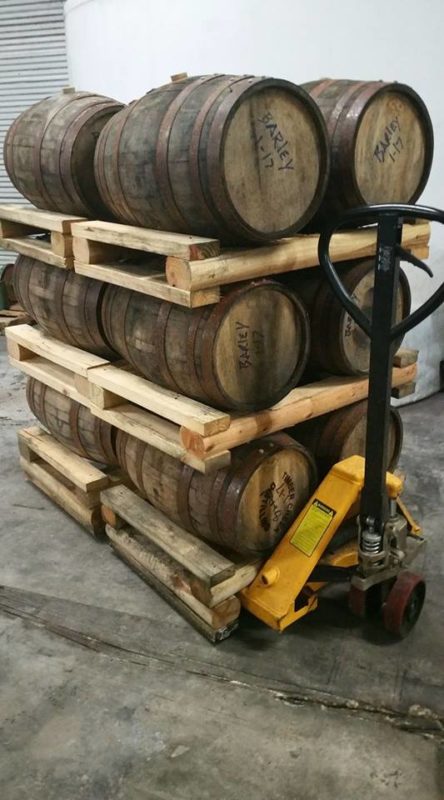 Talk for a minute about your choice of still – how did you know it would create the flavor profiles you were looking for?
Talk for a minute about your choice of still – how did you know it would create the flavor profiles you were looking for?
CF: My background in tech gave me a lot of experience in doing product research from semiconductors to software, so I have a good understanding of the technology and science behind the chemical processes involved in distilling….so I did a lot of homework on the different technologies involved and the history of distilling and we decided we would build a hybrid still using some modern components and also relying on tradition where it made the most sense.
As our primary goal was to make whiskey, we opted for a traditional pot still with a bell head. We also opted for steam jacketed heating to keep the beer from scorching. On top of our bell head, we also added a deflegmator to let us refine the control a bit out of the pot still just a bit. After the deflegmator, the steam travels to a traditional worm condenser. Our overall design was meant to be similar to scotch stills, but with an American flair. The scotch stills mostly use tapered still heads while brandy stills tend to use a bell head. The bell head is a bit more traditional for American whiskey, but the worm condenser is very traditional for Scottish stills.
The bottom line is that we didn’t know what flavor profile it would ultimately create, but as we discussed above, there are many things that ultimately contribute to the flavor profile of a distillate. Traditional pot stills allow the most flavor to pass and that is what we were looking for. If you want to make gasoline or Vodka….then column stills are certainly the way to go…..but we actually like flavor, so we went with the pot still.
What’s the best thing about working at Timber Creek Distillery?
CF: The best thing about working at Timber Creek is that I am my own boss and I get to drink on the job. It is really a lot of fun. The property we distill at is absolutely beautiful. We ride 4 wheelers, shoot guns, fish, play in the creek, camp, etc…..and that is our office. While the beaches here in Destin are beautiful, the north Florida country side is also beautiful and peaceful.
Walk us through the distillation process. From grain to glass? Is there a flavor profile you’re looking for before bottling the whiskey?
CF: As we mentioned above, our goal is to be gentle with the grains, take care of our yeast, and extract pure flavors from our distillate. In addition to that, one of the most critical parts of making whiskey is the barrel selection. The TTB mandates that Bourbon and American whiskeys must be aged in charred American oak barrels, but it doesn’t say where you have to get your oak. American oak grows just about everywhere in the United States and there are cooperages from new York to Minnesota to California to Missouri.
There are barrels that use oak from many parts of the us, but for American whiskey, the dominant flavor profile is Bourbon with lots of vanillas and caramels that can only come from southern oak and the best coming from Missouri oak…..depending on who you ask. We work with a family run cooperage out of Missouri and I can tell you the flavors we get from Missouri oak are absolutely fantastic. We know that everyone has different tastes, so instead of having a single flavor profile, we opted to come out with 3 different whiskeys to satisfy multiple tastes. Our Florida Bourbon is a sweet and easy to drink bourbon.
Our reserve is a spicy, bold, and flavorful bourbon, and our 100% rye is all rye all the time. Every customer has a different taste and a different favorite product.
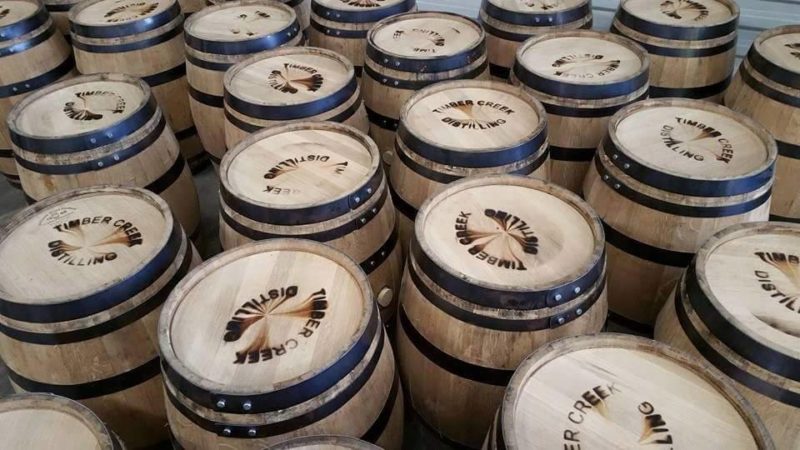 Do you believe now is the most exciting time for a whiskey lover?
Do you believe now is the most exciting time for a whiskey lover?
CF: I believe this is a very interesting and enlightening time for whiskey lovers. Many of the mainstay aged whiskeys are in short supply, so customers are having to go out of their comfort zone and try new products, so I believe the timing is right for new distilleries like ours to come out and really make a name for ourselves by delivering very clean, flavorful, bold products to market to give whiskey lovers some alternatives to the traditional products in the market.
Where do you see your distillery 5 years from now?
CF: Our goal is to be a profitable, sustainable distillery in the next several years. Our love is whiskey and we would like to be able to put as much whiskey in barrels as possible as that is our future. In the next 5 years, we expect to have several rick houses on the property full of barrels and to be recognized as one of the finest new whiskey makers in the country. We have just received our first whiskey review of our Florida Bourbon by WhiskeyReviewer.com and they gave us a very respectable B+ which puts our young Bourbon in a very elite class of Bourbons.
In a recent visit to a major bourbon bar up in the Atlanta area, we tasted our products with the head bartender who has been working there for many years. His feedback was that our Rye was better than any rye he had on the shelf (he had over 20 ryes….all of the top brands), and that out of the 200+ Bourbons he stocked, our Bourbons were better than all but about 6-8 he had on the shelf. While these views are recent, they do show that we have a decent product and are headed in the right direction…..especially since our whiskeys are really only aged about 11-13 months on average. Just wait until we have a 5 year old Bourbon.
Is there anything else you’d like to share with our readers?
CF: I would like to say to your readers that times are changing and much like the craft beer market, the craft distilling market is young but growing fast. And much like the craft beer market, craft distillers are striving to bring very high quality, flavorful spirits to the market that is still dominated by a broad range of mediocre spirits. You deserve better and its time to give craft spirits a try.





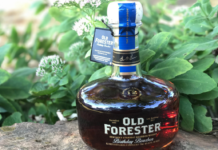
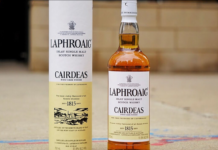
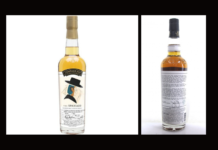
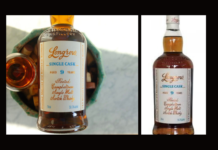




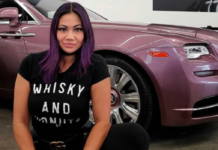
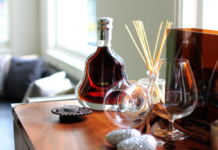
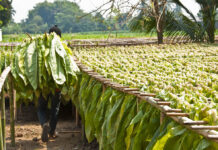

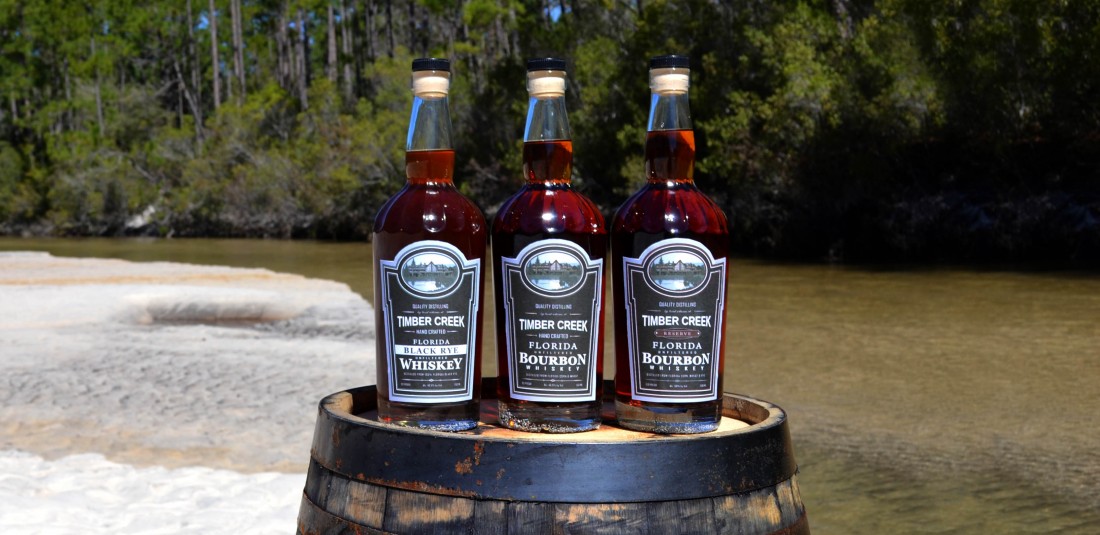



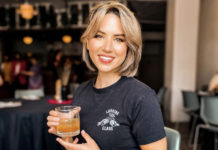
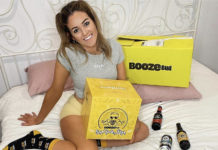

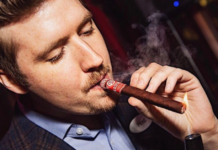


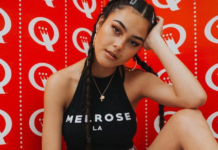

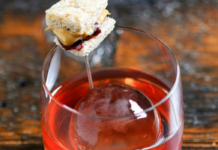
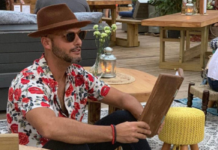

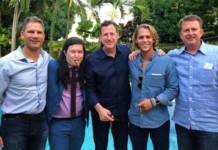


[…] Creek is situated on a 1,400-acre family farm, founded in 2014 by neighbors Camden Ford (an engineer and entrepreneur) and Aaron Barnes (an avid home brewer) who combined individual […]